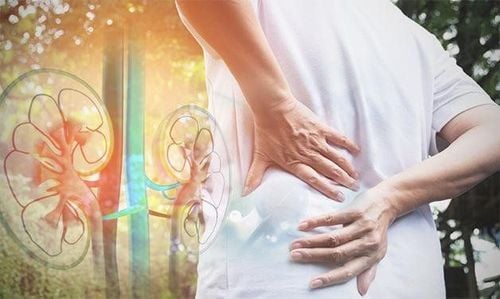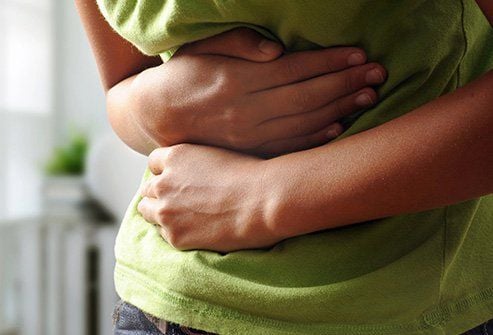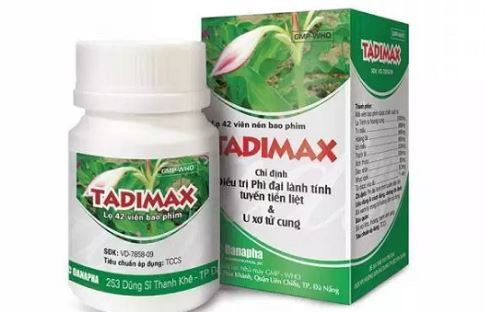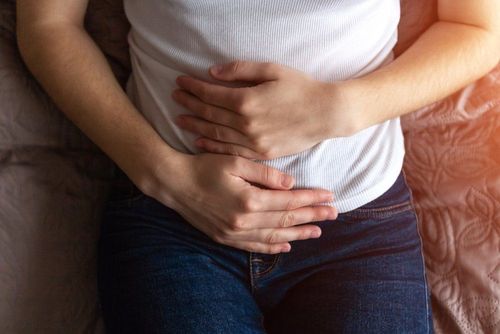This is an automatically translated article.
The article is professionally consulted by: Doctor Nguyen Chi Quang, Obstetrician and Gynecologist, Vinmec Central Park General Hospital. The doctor has many years of experience in the field of obstetrics and gynecology.Surgery is the most commonly indicated treatment for uterine fibroids. One of the complications of fibroid surgery is a ureteral fistula that causes urinary incontinence.
1. Surgery - a common method of treating uterine fibroids
Women entering the period of 30 - 45 years old are often prone to uterine fibroids. Some factors that increase the risk of uterine fibroids are heredity, obesity, early menstruation (before the age of 12), people with high estrogen, diabetes, breast fibroids,...Common symptoms in patients with uterine fibroids include: enlarged abdomen; urinary frequency, difficulty urinating, urinary retention (tumor pressing on the bladder); hydronephrosis (tumor compressing the ureter); constipation, pain when defecating (tumor pressing on the rectum) or digestive disorders (tumor pressing on the stomach and intestines),... In addition, patients with uterine fibroids also have menorrhagia. amenorrhea, long-term leading to anemia.
In the treatment of uterine fibroids, the doctor needs time to monitor the growth and symptoms of the tumor before giving the best plan. If the tumor grows slowly, the patient has no symptoms of vaginal bleeding, then treatment is not necessary. However, if the tumor grows rapidly, causing many other symptoms, the patient may be prescribed medication or surgery.
In the case of medication, the patient is instructed to use non-steroidal anti-inflammatory drugs, oral contraceptives, anti-gonadotropin hormone drugs,... And surgery is a low-cost, radical treatment. to be the most widely applied today.

Most doctors appoint patients with uterine fibroids to remove fibroids by the following methods:
Removal of fibroids: Patients who are young and want to preserve fertility can choose the method of fibroid removal. fibroids and then sutures to restore the uterine muscle layer. Indications for fibroid dissection if one or two nuclei are located in the muscle layer. However, fibroids can still recur after dissection; Torsion to remove the vaginal fibroids: If the fibroids have stalks that protrude into the vagina, the fibroids can be twisted to remove the fibroids close to the stalks. If the fibrous peduncle is large, sutures or electrocautery should be performed to stop bleeding at the base of the peduncle; Transverse or complete hysterectomy: Indicated for elderly patients, large fibroids or multiple fibroids. Depending on the condition of the cervix and the patient's age to make the decision to cut completely or horizontally (not completely) and keep the 2 ovaries or not; Arterial occlusion: A method of removing uterine fibroids by means of arterial occlusion. Doctors inject drugs into the patient's body to prevent blood from feeding the tumor. After 3 - 6 months, the tumor will shrink and be discharged out of the body by the menstrual cycle. This method has the advantage of being painless and the patient can have a normal pregnancy once the tumor is removed.
2. Risk of ureteral fistula complications after fibroid removal
Uterine fibroid removal surgery is a simple procedure with few complications. However, some risks still exist after performing this technique, especially complications of ureteral fistula. Ureteral fistula is a condition that occurs when an abnormal hole develops between the vagina and the tubes that carry urine from the kidneys to the bladder (ureters). There are many causes of ureteral-vaginal fistula such as complications during cesarean section, trauma during labor, trauma such as traffic accidents, falls, invasive cancer or complications after fibroid removal surgery. uterus. In particular, if the patient has a large uterine fibroid that has adhered to the intestinal wall and bladder, it is very easy to have a bladder fistula after surgery.
After fibroid removal about 7-10 days, if the patient has pain, continuous, uncontrolled urination, even blood in urine, ... then it may be a warning sign of urinary leakage. management after surgery. The size of the fistula can be very small, requiring a toothpick to be seen or as large as the tip of a finger. Patients often have urine flow through the vagina, flowing day and night, causing a strong odor and easily leading to bacterial cystitis. This disease greatly affects the quality of life of the patient and needs to be treated immediately to prevent urine from entering the incision.
Regarding the treatment of urethral fistula complications after fibroid removal, in the case of small fistulas, it is possible to use fistula electrocautery, combined with bladder drainage to scarify the fistula. In case of large fistula, surgery will be indicated. Patients need surgery soon when the bladder-vaginal parts adjacent to the fistula are still soft and have not been hardened due to prolonged inflammation. From the fistula, the doctor will separate the bladder tissue from the vaginal tissue on an area large enough to close the bladder fistula, then stitch the vaginal fistula.
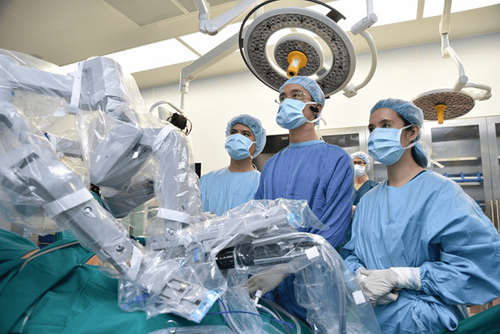
No visual restriction like traditional, optimal image quality with higher accuracy; The robot has 4 hands, equivalent to 2 surgeons, which eliminates unnecessary vibrations (hand tremors); Able to operate in difficult positions, can move freely at 6 angles, wriggle into the smallest and deep cavities; Safety, minimizing the risk of complications, surgical infection; Less pain compared to conventional surgery; Less blood loss, quick recovery, reduced hospital stay; Ensure aesthetics due to very small surgical scars; Enhance recovery after surgery. Laparoscopic surgery to remove uterine fibroids by robot at Vinmec is performed by a team of highly qualified and experienced doctors, with the support of a system of modern and advanced machines, improving efficiency. treatment.
Please dial HOTLINE for more information or register for an appointment HERE. Download MyVinmec app to make appointments faster and to manage your bookings easily.






